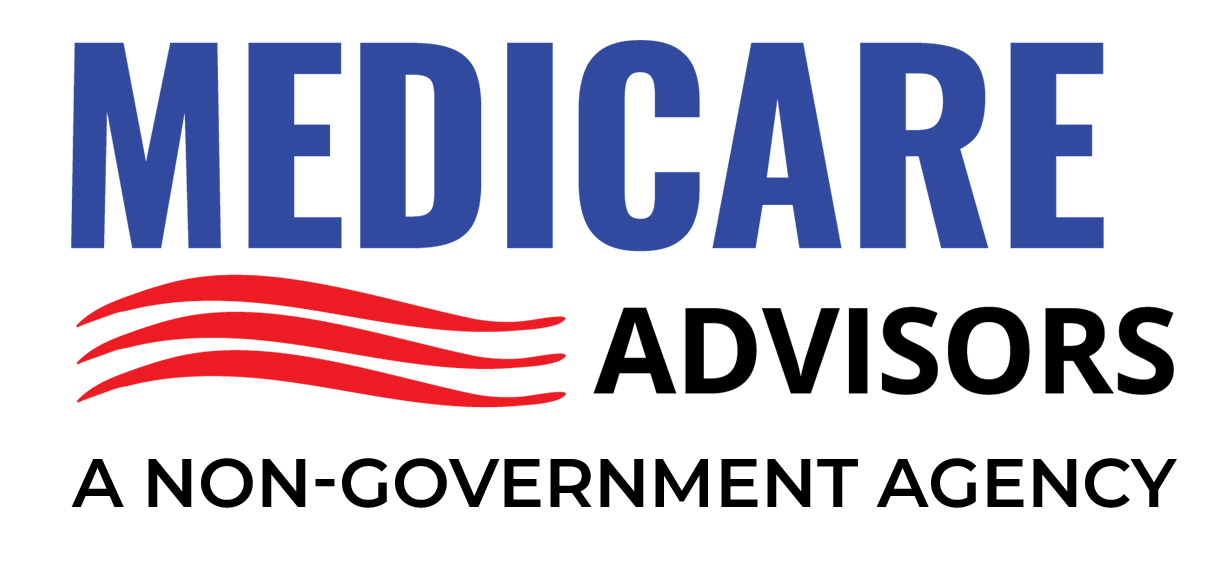Understanding Medicare Basics
Medicare is a federal health insurance program primarily for:
- People aged 65 or older
- Younger individuals with certain disabilities
- Individuals with End-Stage Renal Disease (permanent kidney failure requiring dialysis or transplant)
When you turn 65, you become eligible for Medicare. Signing up on time is crucial to avoid late enrollment penalties, which can increase your monthly premiums. Here’s a quick rundown of Medicare parts:
- Part A (Hospital Insurance): Covers inpatient hospital stays, nursing facility care, hospice care, and some home health care.
- Part B (Medical Insurance): Covers doctors’ services, outpatient care, medical supplies, and preventive services.
- Part C (Medicare Advantage): An alternative way to receive your Medicare benefits through private insurance companies that bundle Part A, Part B, and often Part D.
- Part D (Prescription Drug Coverage): Covers prescription drugs and can be obtained as a stand-alone plan or through Medicare Advantage plans that include drug coverage.
Understanding the cost structure and eligibility requirements for these parts of Medicare will help you avoid unexpected bills and coverage gaps.
Medicare Part A Costs
Medicare Part A typically covers hospital stays, skilled nursing facility care, some home health care, and hospice care. The good news is that most people do not pay a monthly premium for Part A. This is often called “premium-free Part A.” However, there are scenarios where a premium is required:
- Premium-Free Part A
- You or your spouse have paid Medicare taxes for at least 10 years (40 quarters).
- This typically means Part A is $0 per month.
- Paid Medicare Taxes for 30–39 Quarters
- You may have to pay a reduced monthly premium, which can be around $278 (in 2023; subject to change each year).
- Paid Medicare Taxes for Less Than 30 Quarters
- You pay the full monthly premium, which can be around $506 (in 2023; also subject to annual adjustments).
Part A Deductibles and Coinsurance
Even with premium-free Part A, you are still responsible for a deductible and coinsurance:
- Hospital Stay Deductible: In 2024, the Part A deductible for each benefit period is $1,632 (this amount typically changes year to year).
- Days 1–60 in the Hospital: $0 coinsurance per day after you pay your deductible.
- Days 61–90 in the Hospital: A daily coinsurance (about $408 in 2024) per day.
- Days 91 and Beyond: A higher daily coinsurance (about $816 in 2024) per each “lifetime reserve day.” You have up to 60 lifetime reserve days. After these days are exhausted, you pay all costs.
Key Point: Part A costs can add up if you have multiple hospital stays within a year. Many people choose to supplement Part A with other parts of Medicare or Medigap policies to help manage these costs.
Henry Beltran’s Take:
“For most people, Part A is premium-free, which is fantastic. But I always remind clients that the deductible and coinsurance can become expensive if they have prolonged hospital stays. That’s why understanding your full Medicare coverage—and possible add-ons like Medigap—is so crucial.”
Find Medicare Plans in 3 Easy Steps
We can help get up to $0 monthly premium Medicare plans
Medicare Part B Costs
Medicare Part B covers outpatient care, doctors’ services, preventive services, and certain medical supplies. Almost everyone who has Part B pays a monthly premium. The standard Part B premium changes annually.
Monthly Premiums
- In 2024, the standard Part B premium is $174.70 per month.
- If your modified adjusted gross income (MAGI) from two years ago exceeds certain thresholds, you may pay an Income-Related Monthly Adjustment Amount (IRMAA) in addition to the standard premium.
Income Brackets and IRMAA (2024 figures, subject to annual change)
- Individuals with MAGI ≤ $103,000: Pay $174.70 (standard premium)
- Individuals with MAGI $103,001 – $129,000: Pay standard premium + IRMAA surcharge
- And so on, with higher income brackets paying higher surcharges.
For exact amounts, visit Medicare.gov, as these brackets and surcharges can change yearly.
Part B Deductible and Coinsurance
- Annual Deductible: $226 in 2023 (2024 amounts are announced later in the year; typically, they are slightly higher).
- Coinsurance: After you meet the deductible, you generally pay 20% of the Medicare-approved amount for most Part B services.
Potential Pitfall: The 20% coinsurance has no out-of-pocket maximum under traditional Medicare. This means if you require frequent outpatient care or expensive treatments, the 20% coinsurance can become quite high. Many beneficiaries opt for Medigap or Medicare Advantage plans to cover some or all of these gaps.
Henry Beltran’s Take:
“Part B is a lifeline for consistent, ongoing care. But keep in mind that 20% of a big medical bill can break the bank. I always recommend discussing supplemental options before you sign up so you’re not taken by surprise.”
Medicare Part D Costs
Medicare Part D is prescription drug coverage, and it’s offered through private insurance companies approved by Medicare. You can enroll in Part D either as a stand-alone plan (if you have Original Medicare) or through a Medicare Advantage plan that includes prescription drug coverage.
Monthly Premiums
Your Part D monthly premium depends on the plan you select. Plans vary by region, and each plan has a unique cost structure. The national base beneficiary premium is around $34.70 in 2024, but actual premiums can be higher or lower. Some people with higher incomes also pay an income-related monthly adjustment in addition to their plan’s premium.
Deductible and Cost Sharing
- Deductible: Plans can have a deductible up to $545 in 2024. Some plans have no deductible.
- Cost Sharing: After you meet the deductible, you pay either a copay (a set dollar amount) or coinsurance (a percentage of the drug cost).
- Coverage Gap (“Donut Hole”): Once you and your plan spend a certain amount on drugs (around $5,030 in 2024), you enter a coverage gap where you pay a higher percentage of drug costs. Thanks to legislative changes, the donut hole is less burdensome than in the past, but it still can affect out-of-pocket expenses.
Late Enrollment Penalty
If you delay enrolling in Part D without having other creditable prescription drug coverage, you might face a late enrollment penalty that adds to your monthly premium permanently.
Henry Beltran’s Take:
“Don’t overlook Part D, even if you don’t take many prescriptions now. Coverage gaps and penalties can really hit you where it hurts. Part D is more about protecting your future.”
Find Medicare Plans in 3 Easy Steps
We can help get up to $0 monthly premium Medicare plans
Medicare Advantage (Part C) Costs
Medicare Advantage (Part C) is an alternative way to receive your Medicare benefits through private insurance plans that often bundle Part A, Part B, and Part D together. Many beneficiaries find convenience in having a single plan that covers hospital, medical, and prescription needs.
Premiums
- Some Medicare Advantage plans offer $0 premiums, but you still must pay your Part B premium.
- Others have a separate monthly premium on top of your Part B premium.
Cost Structure
- Copays and Coinsurance:
- Instead of paying a flat 20% coinsurance like in Original Medicare, you might pay set copays for doctor visits, hospital stays, or other services.
- Annual Out-of-Pocket Maximum:
- Medicare Advantage plans are required to have a maximum out-of-pocket limit, which can protect you from very high costs. This limit varies by plan but cannot exceed amounts set by Medicare (often around $8,300 in 2023 for in-network services, though it can be higher if you use out-of-network providers).
- Networks and Restrictions:
- Most plans have networks of providers. If you go out-of-network, your costs might be higher.
Benefits of Part C often include extra services like dental, vision, hearing, gym memberships, and wellness programs. However, these perks come with limitations, such as restricted provider networks.
Henry Beltran’s Take:
“Medicare Advantage can be a budget-friendly option—especially if you need coverage beyond what Original Medicare offers. Just be mindful of networks and out-of-pocket limits. Sometimes a $0 premium plan can save you money each month, but you have to consider your specific health needs.”
Medigap (Medicare Supplement) Costs
Medigap, or Medicare Supplement Insurance, is sold by private insurers to fill the “gaps” in Original Medicare (Part A and Part B). These policies help cover:
- Part A and Part B deductibles
- Coinsurance and copayments
- Additional benefits, like medical care when traveling outside the United States
Premiums Vary
The monthly premium for a Medigap policy varies based on:
- Geographic Location
- Age
- Gender
- Smoking Status
- Specific Plan (A, B, C, D, F, G, K, L, M, or N)
Plans F and G are among the most comprehensive, but they also come with higher premiums. Some states regulate Medigap differently, so compare policies carefully.
Enrollment Window
Your best time to buy a Medigap policy is during your Medigap Open Enrollment Period:
- This 6-month window starts the month you turn 65 and are enrolled in Part B.
- During this period, you have guaranteed issue rights: insurers cannot deny you coverage or charge you more based on pre-existing conditions.
Medigap can be an excellent way to reduce unpredictable out-of-pocket costs, but it does not cover prescription drugs (Part D) or extra benefits like vision or dental. You’ll still need separate Part D if you want prescription coverage.
Henry Beltran’s Take:
“Medigap plans are fantastic for those who want peace of mind with out-of-pocket costs. Yes, you’ll pay a premium, but in the event of serious illness, it can be a financial lifesaver.”
Find Medicare Plans in 3 Easy Steps
We can help get up to $0 monthly premium Medicare plans
Additional Factors Affecting Your Medicare Costs
When calculating your Medicare expenses, keep in mind several additional factors that may influence your monthly premiums and out-of-pocket costs:
- Late Enrollment Penalties
- Part B: If you don’t enroll when first eligible, you may face a 10% increase in your monthly premium for each 12-month period you were eligible but did not sign up.
- Part D: If you go without creditable prescription drug coverage for 63 consecutive days or more after your Initial Enrollment Period, you’ll incur a permanent penalty added to your monthly Part D premium.
- Income-Related Monthly Adjustment Amounts (IRMAA)
- High-income individuals pay more for Part B and Part D.
- Employer Coverage Coordination
- If you continue to work after 65 and have employer-based coverage, you can delay Part B without penalty (subject to certain conditions). The cost structure for Medicare will vary depending on how this coverage coordinates with Medicare.
- State Programs
- Medicaid, Medicare Savings Programs, and other state pharmaceutical assistance programs might help with premiums and out-of-pocket costs if you meet specific income and asset requirements.
- Timing of Enrollment
- Early or delayed enrollment can affect your premium amounts and coverage start dates.
People Are Always Asking
A common sentiment is: “I’ve heard Medicare is free when you turn 65. Why am I seeing these costs?” While Medicare Part A can be free if you’ve paid enough into Medicare taxes, Part B and Part D nearly always involve some out-of-pocket premium. People also ask about the total cost of Medicare once all parts are combined. The truth is, you have control over what your coverage looks like and how much you pay. By carefully selecting supplementary plans—be it a Medigap policy or a Medicare Advantage plan—you can create a package that suits your healthcare needs and budget.
Potential Drawbacks of Each Medicare Service
While Medicare is a lifeline, it’s not perfect. Let’s look at the common drawbacks for each part:
- Part A
- Drawback: Deductible per benefit period and daily coinsurance for extended hospital stays can become expensive.
- Tip: A Medigap policy might help cover these costs.
- Part B
- Drawback: 20% coinsurance with no out-of-pocket max can lead to high bills for serious illnesses or ongoing treatments.
- Tip: Consider Medigap to cap these costs or switch to a Medicare Advantage plan that has an out-of-pocket maximum.
- Part D
- Drawback: Coverage gap (“donut hole”) and late enrollment penalties.
- Tip: Some plans have better coverage through the gap; always compare drug formularies and costs.
- Medicare Advantage (Part C)
- Drawback: Provider networks can limit your choice of doctors. Plans may require prior authorizations.
- Tip: If you need flexibility or you travel frequently, Original Medicare plus Medigap might work better.
- Medigap
- Drawback: Premiums can be expensive depending on your age and location. No dental, vision, or prescription drug coverage included.
- Tip: Research different Medigap plans (A through N) to find the best coverage. Budget for a stand-alone Part D plan if you need prescription coverage.
Henry Beltran’s Take:
“No plan is a one-size-fits-all. Medicare Advantage might be great for your neighbor but might not fit your needs if you need a specific specialist outside the plan network. It’s about finding that balance between coverage and cost.”
Find Medicare Plans in 3 Easy Steps
We can help get up to $0 monthly premium Medicare plans
Reviews from Real Medicare Beneficiaries
Below are fictionalized but representative reviews compiled from conversations with individuals who have gone through the Medicare enrollment process:
- Linda, 67, from Texas
- Plan: Original Medicare (Part A, B) + Medigap + Part D
- Review: “I wanted the freedom to go to any doctor I choose. Yes, I pay a higher monthly premium for my Medigap plan, but I rarely pay anything else out-of-pocket. It has been worth every penny for my peace of mind.”
- John, 70, from Florida
- Plan: Medicare Advantage (Part C)
- Review: “I found a $0 premium plan that includes my prescriptions, vision, and dental coverage. Overall, my monthly costs are low. The only downside is I have to stay in-network, but it hasn’t been a big issue yet.”
- Sarah, 65, from California
- Plan: Original Medicare + Part D
- Review: “When I first enrolled, I couldn’t afford a Medigap policy. I have some copays, but I try to stay healthy and use preventive services. I’ve never had a problem with Part B coverage—the doctor visits are straightforward.”
- Michael, 72, from New York
- Plan: Medicare Advantage with additional benefits
- Review: “I love the extra perks like gym membership and transportation services to doctor visits. My monthly premium is low, but I do pay more in copays when I actually see my specialist. It balances out for me.”
FAQ: Your Common Questions Answered
Below are some frequently asked questions to help clarify typical Medicare concerns. Remember, you can always visit Medicare.gov or talk to a trusted advisor for more detailed information.
- When should I enroll in Medicare at age 65?
- You have a 7-month Initial Enrollment Period: three months before your 65th birthday, the month of your birthday, and three months after. If you’re already receiving Social Security benefits, you may be automatically enrolled in Parts A and B.
- Is Part A always free?
- Yes, for most people who’ve worked and paid Medicare taxes for at least 10 years. Otherwise, you may pay a premium.
- What if I’m still working at 65?
- If you have employer coverage from an active employer with 20 or more employees, you can delay Part B without penalty until your employer coverage ends. Confirm with your HR department.
- Do I really need Part D if I don’t take any medications?
- Medicare experts recommend at least a low-cost Part D plan to avoid late enrollment penalties. Even if you’re currently healthy, you never know when you might need coverage.
- What is IRMAA and how does it affect me?
- IRMAA is an Income-Related Monthly Adjustment Amount. High earners pay higher premiums for Parts B and D. It’s based on your tax returns from two years prior.
- Can I switch from Medicare Advantage to Original Medicare?
- You can switch plans during the Annual Election Period (October 15–December 7) or during the Medicare Advantage Open Enrollment Period (January 1–March 31) if you already have a Medicare Advantage plan.
- What if I miss my enrollment period?
- You might have to wait for the General Enrollment Period (January 1–March 31) and pay late enrollment penalties.
- How do I find out about specific costs in my area?
- Visit the Plan Finder tool on Medicare.gov or contact a licensed Medicare agent in your state for personalized quotes.
Closing Thoughts
Understanding how much Medicare costs at age 65 is one of the most important steps toward securing a comfortable and worry-free retirement. It’s not just about the premium you pay; it’s about preparing for future healthcare needs—which can change quickly as we age.
- Part A costs are often free (premium-free), but beware of deductibles and coinsurance.
- Part B has a standard monthly premium and can have high out-of-pocket costs due to the 20% coinsurance without a maximum.
- Part D covers prescription drugs but comes with potential coverage gaps and penalties if you don’t enroll when first eligible.
- Medicare Advantage (Part C) may offer extra benefits and $0 premiums but could limit your provider choices.
- Medigap policies can help you manage unpredictable costs but come with additional monthly premiums and no extra benefits like dental or vision.
Ultimately, the key is to assess your personal needs, health status, and financial situation. If you feel overwhelmed, consult a licensed Medicare professional or insurance agent who can guide you to the right plan. Remember, Medicare is there to empower you to take charge of your health. With the right plan in place, you’ll be free to enjoy life’s next chapter without worrying about sky-high medical bills.
Final Words from Henry Beltran:
“Medicare is like any big life decision—if you do your homework, it can serve you very well. Stay informed, ask questions, and don’t hesitate to reach out for professional help. You deserve peace of mind in your golden years.”
Thank you for reading! If you found this guide helpful, feel free to share it with friends and family who are also navigating Medicare. For personalized guidance, consider reaching out to Henry Beltran at Medicare Advisors or consult with another licensed Medicare specialist in your area.





